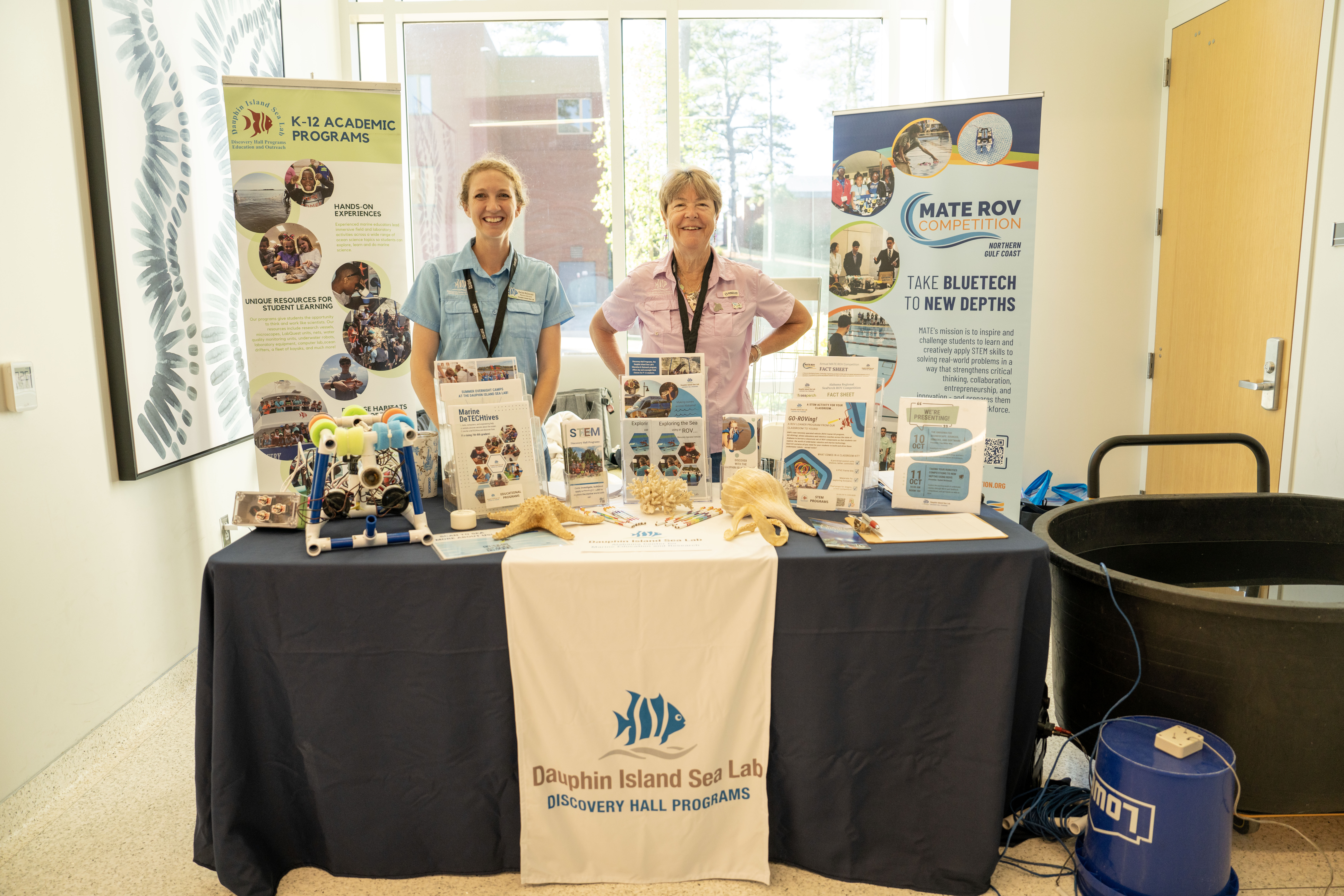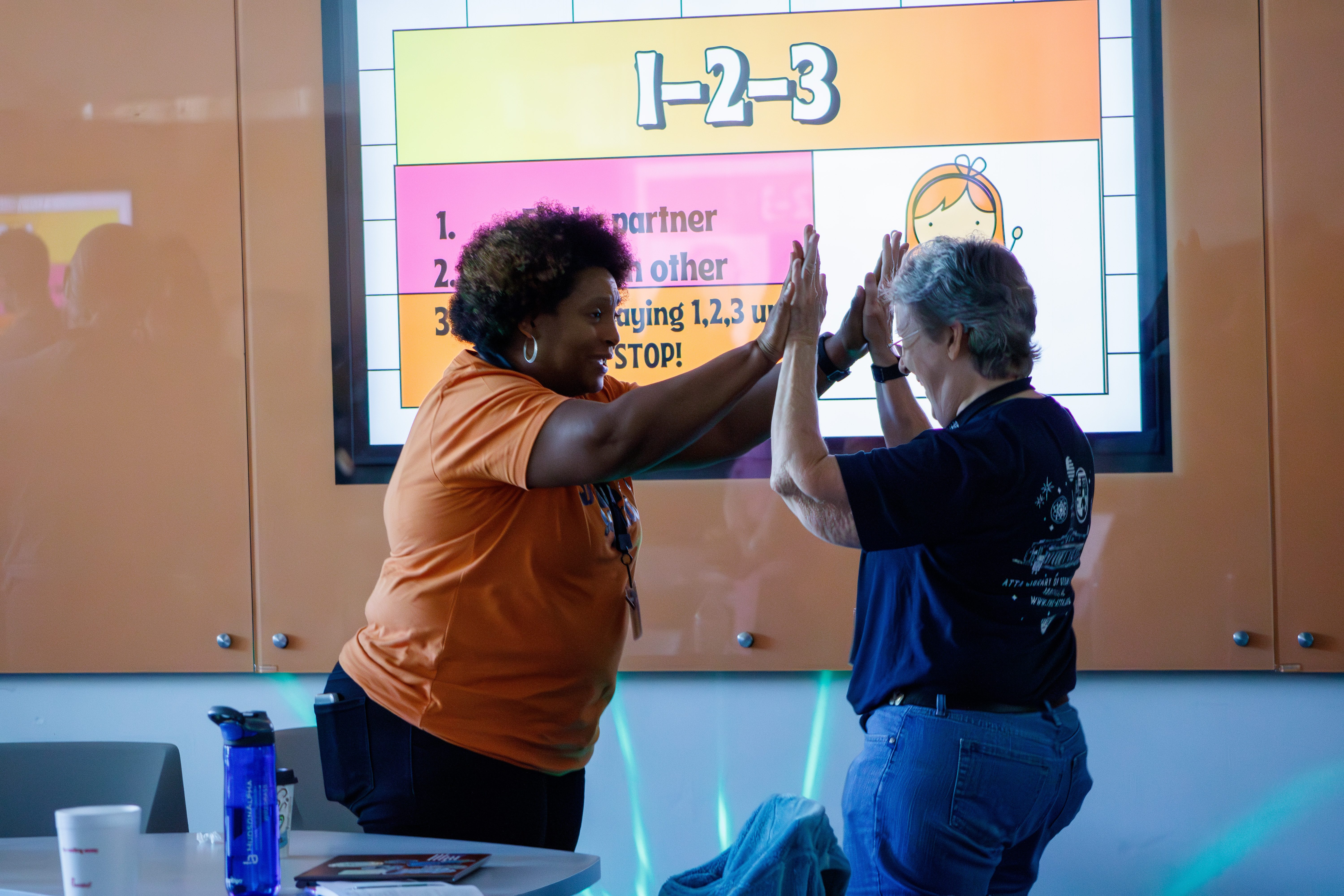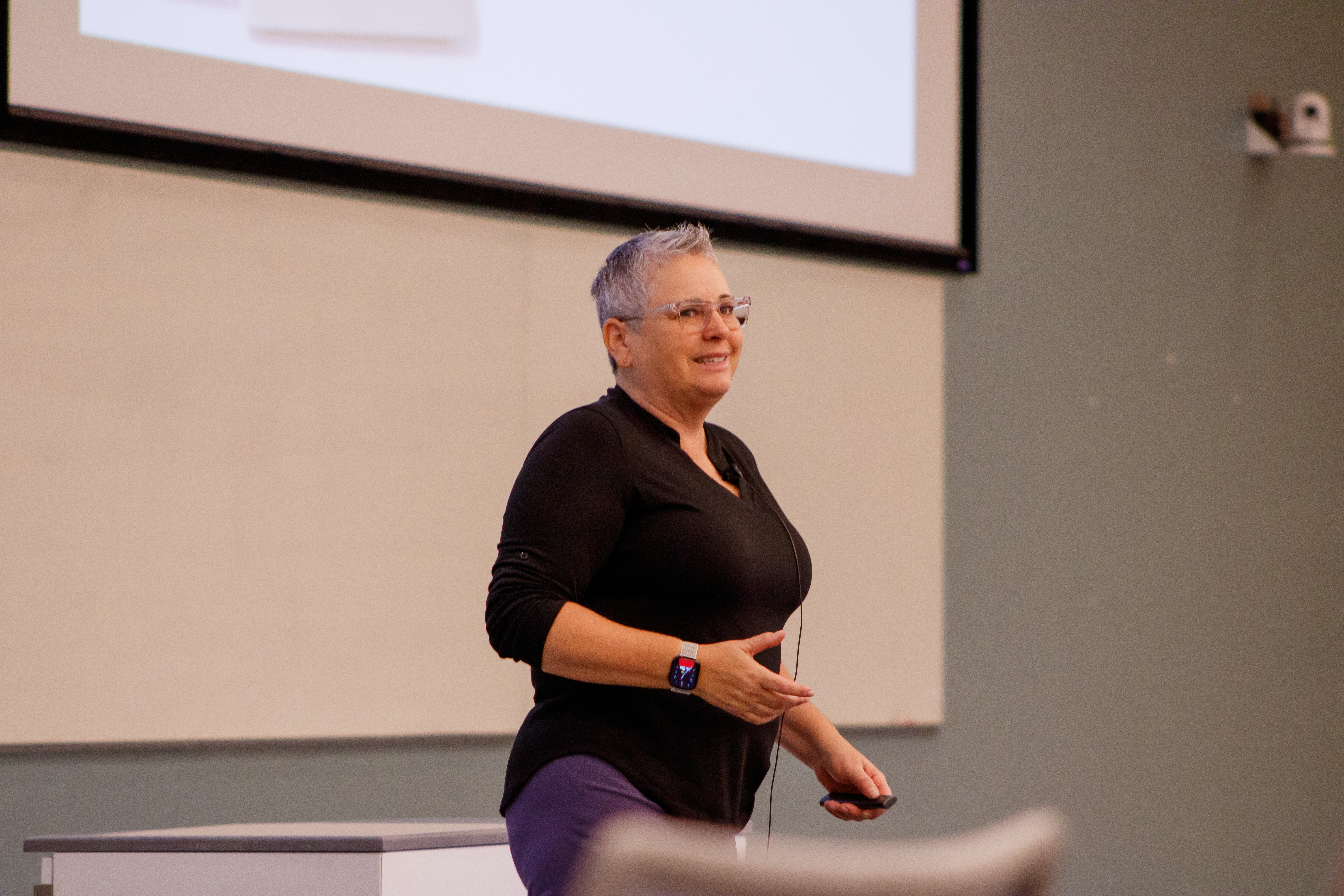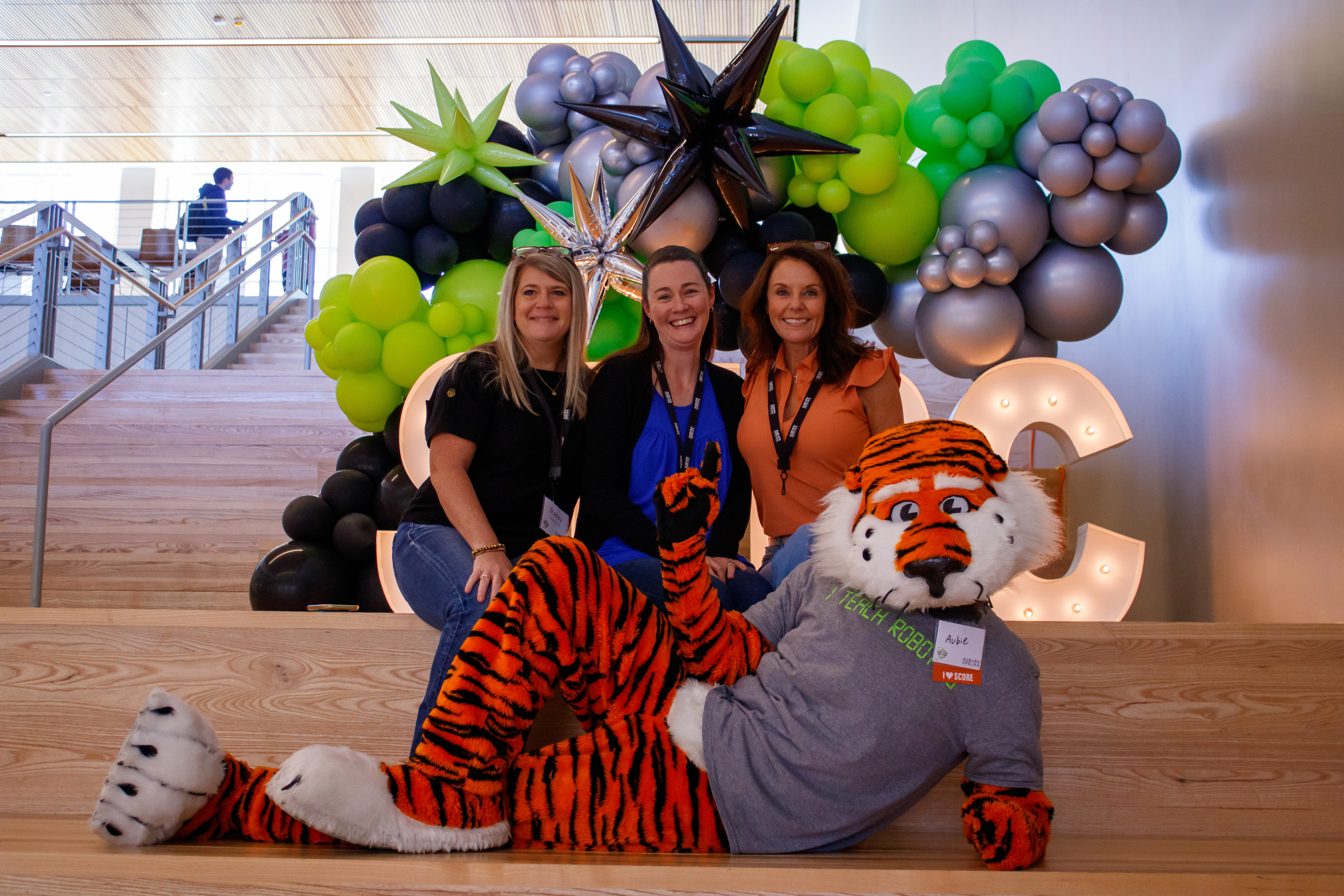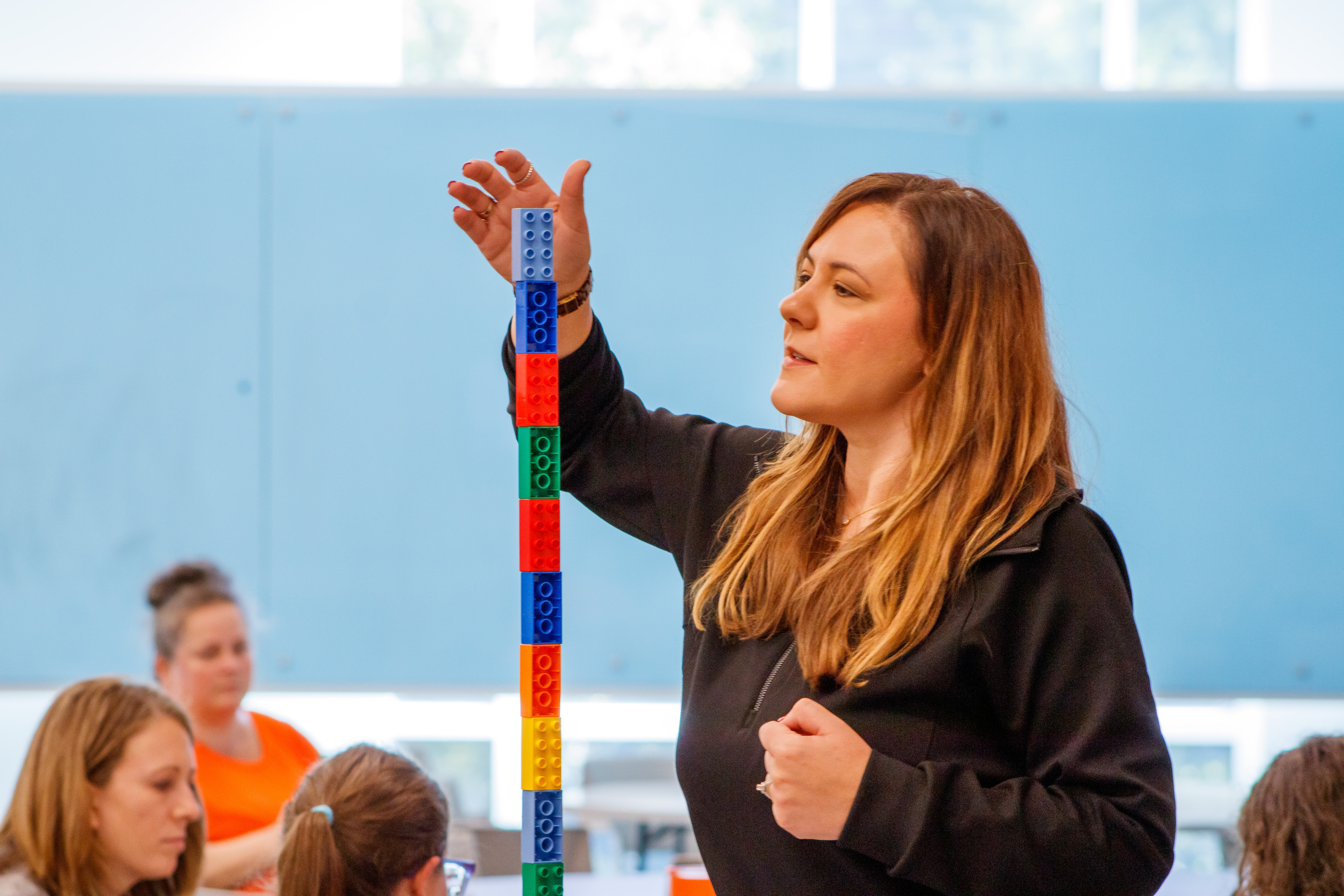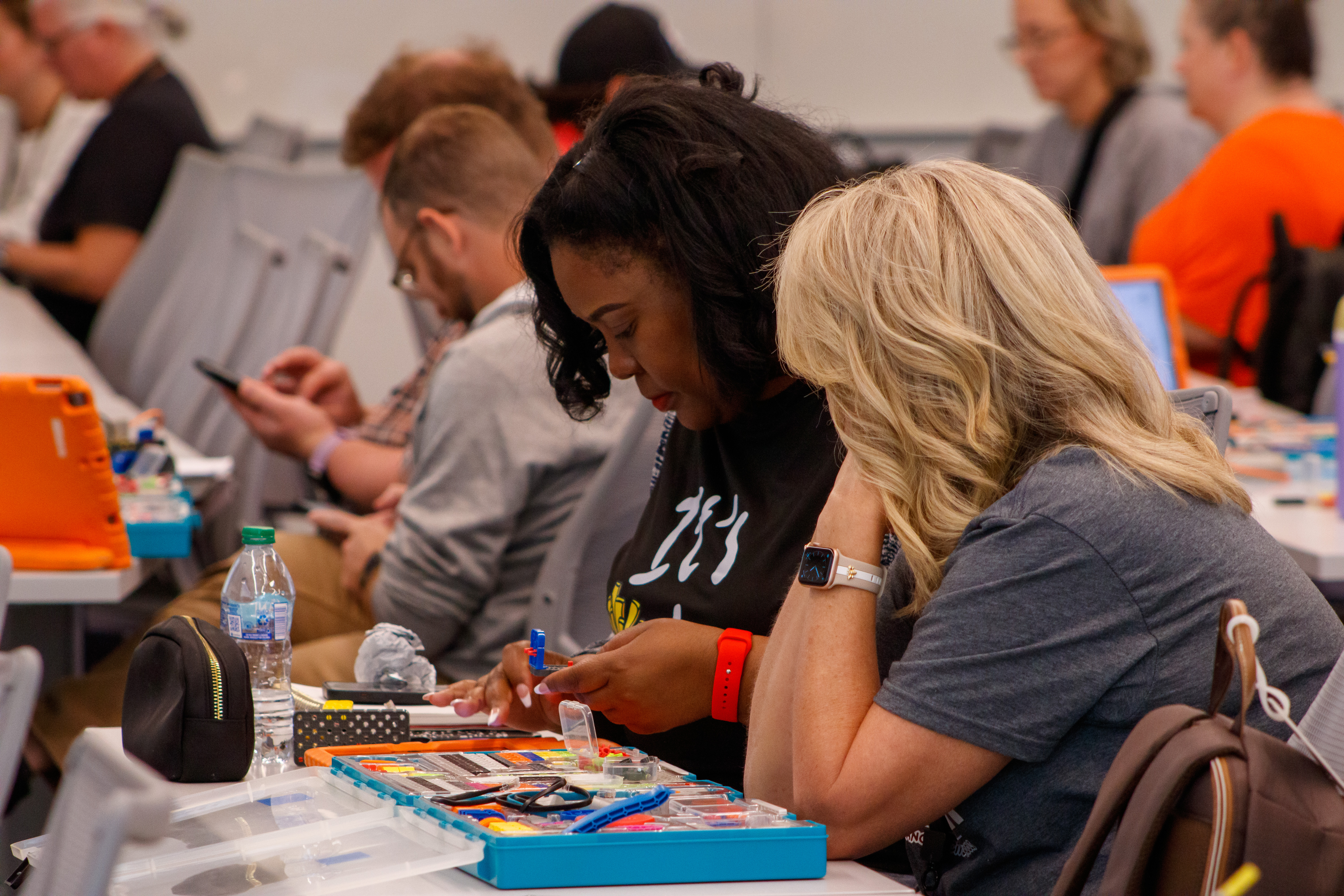content body
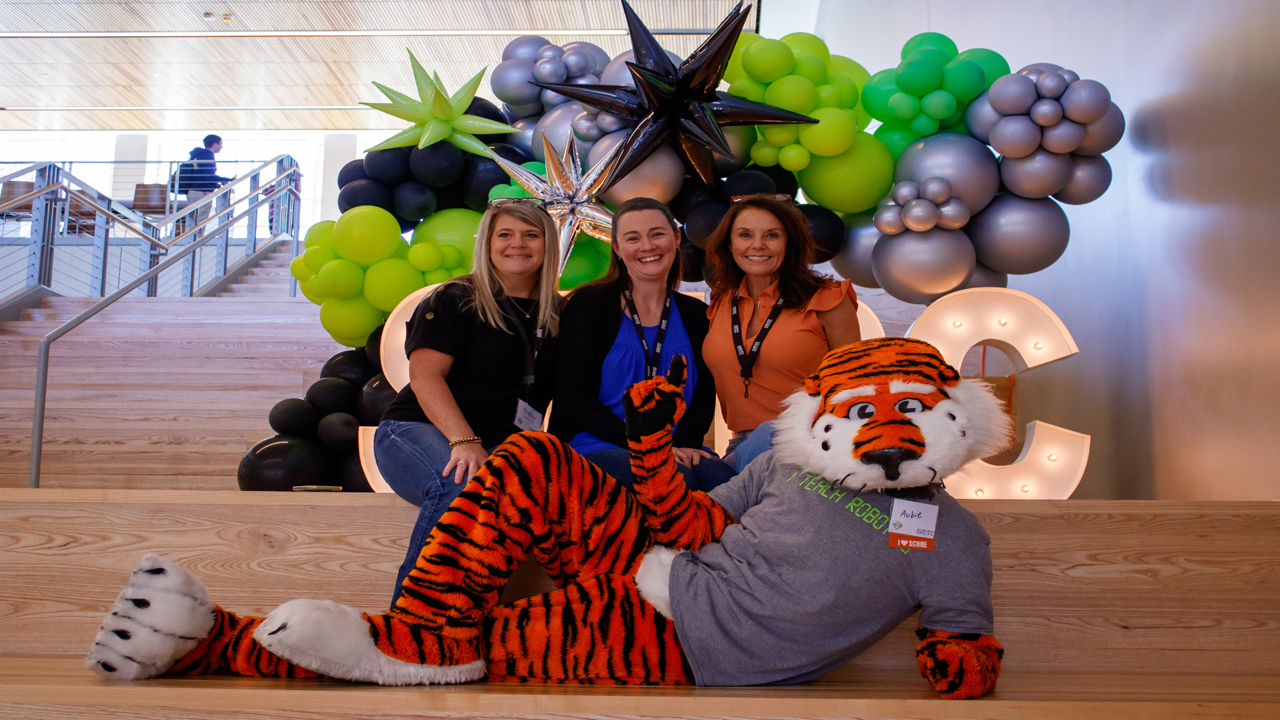
While Auburn University students enjoyed their fall break, more than 170 robotics educators and professionals from across the Southeast gathered for the Southern Educational Robotics Conference (SERC), held Oct. 10-11 at the state-of-the-art Auburn University Academic Classroom and Laboratory Complex (ACLC). Participants engaged in 34 dynamic sessions aimed at advancing STEM education through robotics.
Hosted by the Southeastern Center of Robotics Education (SCORE), an outreach unit within the College of Sciences and Mathematics, SERC is an annual event designed to inspire and empower educators to integrate robotics into their curricula, enhancing learning experiences for students.
A highlight of the conference was the keynote presentation by renowned speaker Leslie Fisher, a global advocate for K-12 technology education. Fisher discussed the evolution of technology and its role in engaging students through Artificial Intelligence.
“As a child, I found learning challenging,” Fisher reflected. “I discovered early on that technology made learning more accessible. With new tools like AI, we can personalize education to fit each child's unique interests and learning styles, particularly benefiting those who struggle in traditional environments.
“I struggled with learning throughout my entire educational career. I discovered early on that technology made learning more accessible and I could personalize a method of learning that worked effectively for me. With new tools like AI, we can personalize education even further to fit each child's unique interests and learning styles, particularly benefiting those who struggle in traditional environments. AI brings back memories of the exciting advancements I had when I started using technology to enhance my learning.”
In the session Programming Fun with Finch 2.0, led by Catherine Kenny, participants explored Finch robots — small, pre-built devices that enable users to dive into programming. Attendees programmed their robots to draw shapes and engage in other fun activities, showcasing the platform's versatility.
Kenny, a regular at SERC, remarked, “What keeps me coming back to SERC is the networking, discovering new materials, and witnessing the growth of robotics throughout the state and beyond.”
Another engaging session, RoboFit: Exploring the Fusion of Robotics and Physical Activity for STEM Education focused on designing obstacle courses where robots race humans, incorporating various locomotor skills, pathways, and speeds. Presenters shared innovative strategies that blend movement and exercise with STEM education, geography, and critical thinking. Educators left feeling ready to empower students to think critically and creatively through this hands-on learning that combines physical activity cutting-edge technology.
One of the participants stated, “This session gave a multi-faceted perspective on using robotics to tap into kids’ natural affinity towards play and movement. This will allow me to make direct content connections and equip students with those contemporary skills they are going to need in the future.”
Networking emerged as a key takeaway from SERC 2024. Educators not only learned about implementing robotics programs but also collaborated on shared challenges.
“Everyone is helping each other by sharing strategies that have worked for their robotics platforms,” said Shawn Bowser, a high school teacher from Wilmington, Delaware. “I've been pleasantly surprised by the new approaches I've learned from teachers at SERC. It’s been a validating experience.”
SERC is dedicated to promoting robotics as a powerful tool for enhancing STEM education in grades K-12. Since its inception in 2019, SERC has led the way in fostering innovation and excellence in teaching and learning through robotics.



